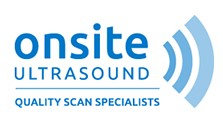Hawkes Bay > Private Hospitals & Specialists >
Onsite Ultrasound
Private Service, Radiology, Pregnancy Ultrasound
Today
8:30 AM to 5:00 PM.
Description
The comprehensive range of scan services available includes:
- Pregnancy Scans (surcharges may apply)
- ACC Scans - (surcharge applies)
- Musculoskeletal - including ultrasound guided cortisone injections
- General Abdominal
- Pelvic
- Obstetric
- Small Parts
- Vascular e.g. DVT, carotids
- diagnose disease states, such as cancer or heart disease
- show the extent of injury to body structures
- to aid in interventional procedures, such as angiography.
- Medical Radiation Technologists (MRTs) or Radiographers perform your X-ray, barium and mammography examinations.
- Sonographers are MRTs who perform your ultrasound examinations.
- Radiologists are specialist doctors who read and understand your films. They will also be involved if you have an intravenous urogram (IVU), barium study, mammogram and a number of other ultrasound procedures. They interpret the results of the images and send them to your doctor.
Staff
The Onsite Ultrasound team are committed to providing an excellent customer experience including quality ultrasound services, with the assurance that patients are treated with respect and courtesy.
Director / Sonographer: Leanne Griffiths
Sonographers: Corien Morrell, Rowena Tyman, Katherine Foley
Radiologists: see below
Meet more of our team here
Consultants
-

Dr Brett Lyons
Radiologist
-

Dr Ajay Mehta
Radiologist
Ages
Child / Tamariki, Youth / Rangatahi, Adult / Pakeke, Older adult / Kaumātua
How do I access this service?
Make an appointment
You will need a request form, completed and signed by a Medical Practitioner e.g your GP, midwife, physiotherapist etc. Then simply call Onsite Ultrasound to make the appropriate appointment- or fax the form.
Contact us
Referral
Referral Expectations
For referrers: download a referral form here
Fees and Charges Description
We are a Southern Cross Affiliated Provider.
Please Note: Payments for non-funded private ultrasound scans, are to be made on the day of appointment.
Hours
8:30 AM to 5:00 PM.
| Mon – Fri | 8:30 AM – 5:00 PM |
|---|
Closed: Saturdays, Sundays and Public Holidays
Procedures / Treatments
In ultrasound, a beam of sound at a very high frequency (that cannot be heard) is sent into the body from a small vibrating crystal in a hand-held scanner head. When the beam meets a surface between tissues of different density, echoes of the sound beam are sent back into the scanner head. The time between sending the sound and receiving the echo back is fed into a computer, which in turn creates an image that is projected on a television screen. Ultrasound is a very safe type of imaging; this is why it is so widely used during pregnancy. Doppler Ultrasound A Doppler study is a noninvasive test that can be used to evaluate blood flow by bouncing high-frequency sound waves (ultrasound) off red blood cells. The Doppler Effect is a change in the frequency of sound waves caused by moving objects. A Doppler study can estimate how fast blood flows by measuring the rate of change in its pitch (frequency). A Doppler study can help diagnose bloody clots, heart and leg valve problems and blocked or narrowed arteries. What to expect? After lying down, the area to be examined will be exposed. Generally a contact gel will be used between the scanner head and skin. The scanner head is then pressed against your skin and moved around and over the area to be examined. At the same time the internal images will appear onto a screen
In ultrasound, a beam of sound at a very high frequency (that cannot be heard) is sent into the body from a small vibrating crystal in a hand-held scanner head. When the beam meets a surface between tissues of different density, echoes of the sound beam are sent back into the scanner head. The time between sending the sound and receiving the echo back is fed into a computer, which in turn creates an image that is projected on a television screen. Ultrasound is a very safe type of imaging; this is why it is so widely used during pregnancy. Doppler Ultrasound A Doppler study is a noninvasive test that can be used to evaluate blood flow by bouncing high-frequency sound waves (ultrasound) off red blood cells. The Doppler Effect is a change in the frequency of sound waves caused by moving objects. A Doppler study can estimate how fast blood flows by measuring the rate of change in its pitch (frequency). A Doppler study can help diagnose bloody clots, heart and leg valve problems and blocked or narrowed arteries. What to expect? After lying down, the area to be examined will be exposed. Generally a contact gel will be used between the scanner head and skin. The scanner head is then pressed against your skin and moved around and over the area to be examined. At the same time the internal images will appear onto a screen
Disability Assistance
Wheelchair access
Pharmacy
Website
Contact Details
203 Canning Road, Camberley, Hastings
Hawkes Bay
8:30 AM to 5:00 PM.
-
Phone
0800 991 119 or (06) 835 1900
-
Fax
(06) 870 4403
Email
Website
62 Munroe Street, Napier
Hawkes Bay
8:30 AM to 5:00 PM.
-
Phone
0800 991 119 or (06) 835 1900
-
Fax
(06) 835 1705
Email
Website
Was this page helpful?
This page was last updated at 11:09AM on November 29, 2023. This information is reviewed and edited by Onsite Ultrasound.

